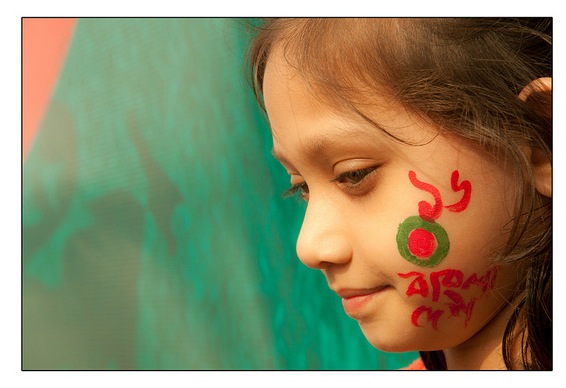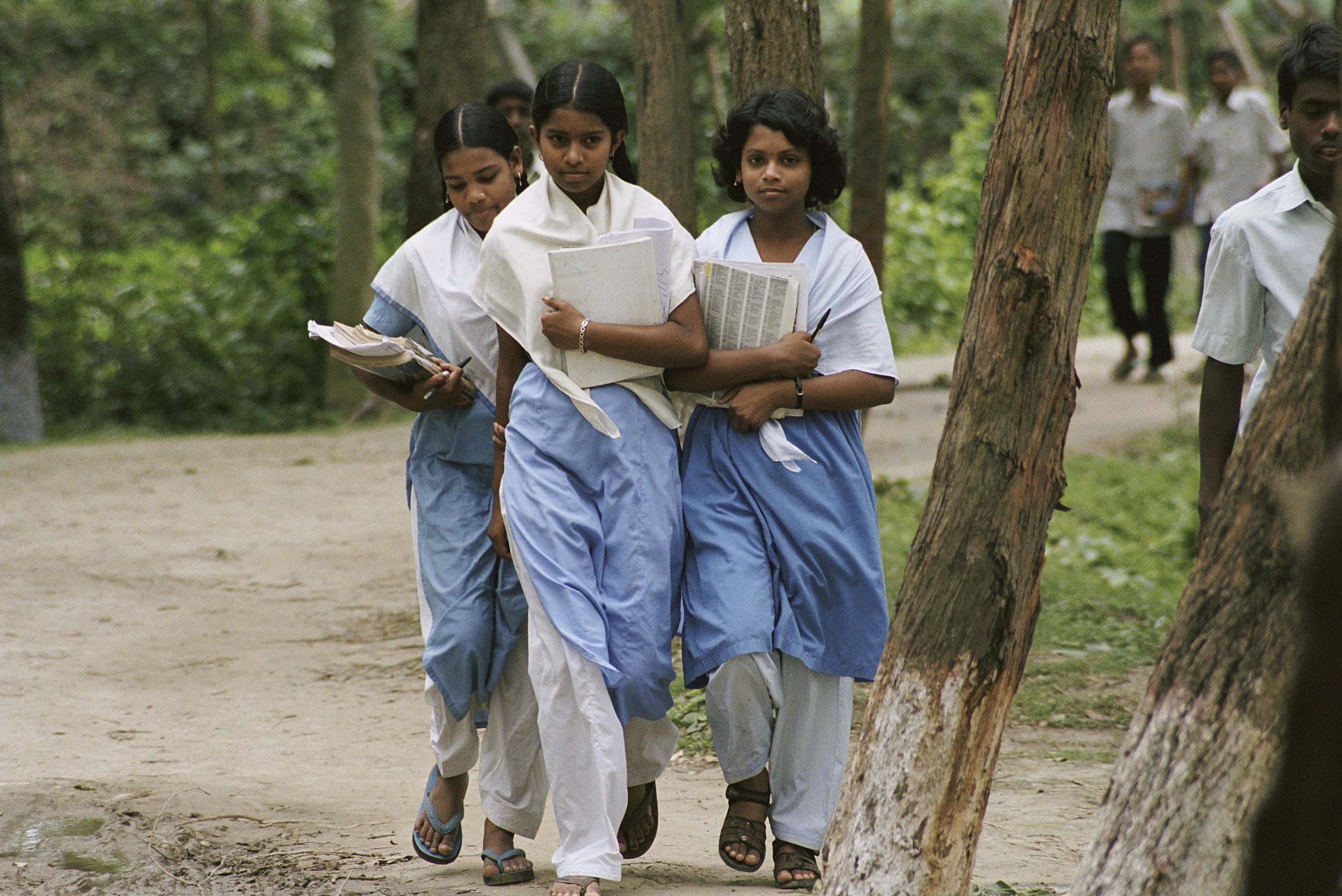World Leader’s Forum:
The stone rotunda of Low Memorial echoed and buzzed as both graduate and undergraduate students, faculty, and the press eagerly awaited Bangladeshi Prime Minister Sheikh Hasina on September 25, 2015. Students giggled as they tried to ignore the TV cameras of the Indian and Bangladeshi press and everyone marveled at the colorful saris which members of Prime Minister Hasina’s group were wearing. When she arrived, clad in a pale pink sari draped over her body and head, a hush fell over the crowd. Prime Minister Hasina’s succinct but genuine speech, followed by her answers to the varied student questions, highlighted what seemed to be the theme of the evening, a phrase mentioned at the end of her appearance: Sonar Bangla, or Golden Bengal, the national anthem of Bangladesh, based on a poem by noted Bengali poet Rabindranath Tagore, and a phrase used to convey national pride.

Prime Minister Hasina’s speech focused on Bangladesh’s struggle and ultimate success in women’s education. After all, the title of her appearance was “Girls Lead the Way.” However, her speech, which gained thunderous applause, began with the events of 1971. Prime Minister Hasina’s father, Sheikh Mujibur Rahman, was the first Prime Minister of independent Bangladesh, and is broadly considered its founding father. Prime Minister Hasina emotionally recalled her father as a defender of democracy, social and secular values, and education. She expressively stated that she owed her passion for education to her father, Bangladesh’s father. Then she brought the audience to the year 1975, when her father and eighteen members of her family were assassinated in a military coup. Prime Minister Hasina and her sister were studying abroad, so they survived.
Prime Minister Hasina then moved forward to the present, where she proudly recounted Bangladesh’s successes and developments for women’s empowerment. Her speech then took a decisively political tone, when she compared her party’s success to the failures of the opposition party. Prime Minister Hasina mentioned that under her government’s first rule in the late 90s, the literacy rate rose from 45% to 65%, whereas it declined under the opposition. In this discussion of women’s empowerment, it is somewhat ironic that Prime Minister Hasina introduced her longstanding and contentious political battle with the female Opposition Leader Begum Khaleda Zia. The female rivalry between current Prime Minister Hasina and Khaleda Zia (who has been Prime Minister, herself, twice) is a bitter and personal fight. Zia’s husband, General Ziaur Rahman, ruled Bangladesh as President in a quasi-military style from 1977-1981, before he was also assassinated in another military coup. Interestingly enough, while Prime Minister Hasina criticized Zia’s opposition party, she also praised the presence of women at the highest levels of government in Bangladesh. Hasina stated that in no other country in the world would you find a government with a female Prime Minister, a female head of opposition, and a female leader of the House.
 Prime Minister Hasina spent much of her speech and answers giving examples of Bangladesh’s commitment to women’s education, from making education free for girls up to 12th grade, to distributing 326.35 million textbooks (stated to be the biggest undertaking of its kind in the world), to creating stipends and collateral-free loans to potential female entrepreneurs, and forming hundreds of technical, vocational, and in some cases, women-only colleges all over Bangladesh. With phrases ranging from the passionate: “Bangladesh can face any challenge!” to the poignant “girls are the hope-bearers of peace and prosperity,” Prime Minister Hasina definitely upheld the event’s message of “Girls Lead the Way.”
Prime Minister Hasina spent much of her speech and answers giving examples of Bangladesh’s commitment to women’s education, from making education free for girls up to 12th grade, to distributing 326.35 million textbooks (stated to be the biggest undertaking of its kind in the world), to creating stipends and collateral-free loans to potential female entrepreneurs, and forming hundreds of technical, vocational, and in some cases, women-only colleges all over Bangladesh. With phrases ranging from the passionate: “Bangladesh can face any challenge!” to the poignant “girls are the hope-bearers of peace and prosperity,” Prime Minister Hasina definitely upheld the event’s message of “Girls Lead the Way.”
Many students excitedly thanked Prime Minister Hasina during the Q and A session, often in Bengali—Ms. Hasina herself peppered her speech with small, motivational Bengali chats, which delighted the Bengalis of the audience, myself included. However, the only points of tension and slight disappointment also occurred during the Q and A session. Ms. Hasina avoided an important question about the high rate of female infanticide in Bangladesh. Her responses on child labor and reduction in minimum marriage age of Bangladeshi girls from 18 to 16 were vague, and always somewhat transparently looped back to her successes on education. In a surprisingly testy moment, when a Bangladeshi student brought up the sexual assault of 20 women at Dhaka University during the last Bengali New Year, Prime Minister Hasina exasperatedly remarked that of all the festivities taking place in such a big country as hers, the student could only name one incident.
Prime Minister Hasina’s event ended on an unconventional note. Instead of immediately leaving after the round of applause, she invited all of the Bangladeshi students (and presumably also the Indian Bengali students) on stage to take a picture with her. President Bollinger and the many security guards looked humorously alarmed. Throngs of thrilled students clambered on the official stage and took pictures. Though the Q and A had its tense moments, and Prime Minister Hasina should take note that omission of certain issues is counterproductive for the message she is trying to send, the joy and applause bookmarking her event definitely proved to the audience that Sonar Bangla, Golden Bengal, was real.

